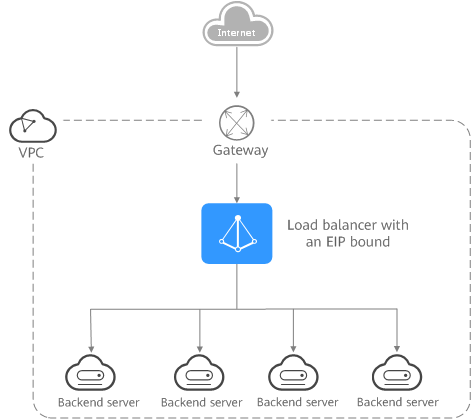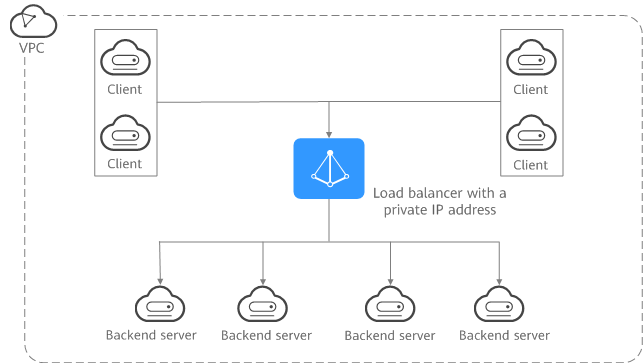Load Balancing on a Public or Private Network¶
A load balancer can work on either a public or private network.
Load Balancing on a Public Network¶
You can bind an EIP to a load balancer so that it can receive requests from the Internet and route the requests to backend servers.

Figure 1 Load balancing on a public network¶
Load Balancing on a Private Network¶
A load balancer has only a private IP address to receive requests from clients in a VPC and routes the requests to backend servers in the same VPC. This type of load balancer can only be accessed in a VPC.

Figure 2 Load balancing on a private network¶
Network Types and Load Balancers¶
Load Balancer Type | Network Type | Description |
|---|---|---|
Dedicated load balancers | Public IPv4 network | Each load balancer has an IPv4 EIP bound to enable it to route requests over the Internet. |
Private IPv4 network | Each load balancer has only a private IPv4 address and can route requests in a VPC. |
Load Balancer Type | Network Type | Description |
|---|---|---|
Shared load balancers | Public network | Load balancers can route requests on both public and private networks.
|
Private network | Each load balancer has only a private IP address and can route requests in a VPC. |